
Welcome, green thumbs and gardening enthusiasts! As the heat of summer begins to wane and the crisp autumn air starts to creep in, it’s time to start thinking about your fall garden. But what if we told you that your location could significantly influence what you should be planting this season? That’s right, not all fall crops are created equal, and what thrives in one climate zone might struggle in another.
In this comprehensive guide, we’ll take you on a journey across the different climate zones of the U.S., from the cool, temperate regions of Zone 5 to the warm, subtropical areas of Zone 9. We’ll explore the best fall crops for each zone, providing you with personalized advice based on where you live.
So, whether you’re a seasoned gardener looking to diversify your autumn harvest or a beginner trying to figure out what to plant in the fall, this guide is for you. Get ready to dig into the world of autumn gardening, fall and winter vegetables, and discover the best vegetables to plant in the fall for a bountiful spring harvest.
Stay tuned as we unearth the secrets of successful fall gardening, zone by zone. Let’s get started!
Understanding Climate Zones
Before we dive into the specifics of what to plant where, it’s essential to understand the concept of climate zones and their significance in gardening. In the United States, the USDA has divided the country into 13 different hardiness zones based on the average minimum winter temperature. Each zone is 10°F warmer or colder in an average winter than the adjacent one.

Why does this matter for your garden, you ask? Well, each plant has a specific temperature range where it can grow and thrive. Some plants can withstand colder temperatures, while others need a warmer climate to survive. By knowing your climate zone, you can choose the right plants for your garden that will thrive in your specific conditions.
In this guide, we’re focusing on zones 5 to 9, as these zones cover a significant portion of the U.S. and offer a wide range of fall planting options. From the cooler climates of Zone 5, where frost can arrive as early as September, to the warmer Zone 9, where frost rarely, if ever, poses a threat, we’ve got you covered.
In the following sections, we’ll explore the best fall crops for each of these zones, providing you with a tailored guide to fall gardening. So, let’s get started!
Fall Crops for Different Climate Zones
When it comes to fall gardening, your climate zone plays a significant role in determining what you can plant. While some crops thrive across multiple zones, others are unique to specific areas. Let’s explore the best fall crops for each zone, highlighting both the shared and unique plants.
Zone 5
Welcome to Zone 5, where the first frost can arrive as early as September. But don’t let that deter you; there are plenty of hearty vegetables and herbs that can withstand the chill and even thrive in it.
In Zone 5, some of the best vegetables to plant in the fall include:
- Kale: This superfood is not only nutritious but also incredibly frost-tolerant. It can continue growing well into the winter months, providing you with a fresh supply of greens when most other plants have called it quits.
- Lettuce: A cool-weather crop, lettuce can be planted in late summer for a fall harvest. Choose a variety that is frost-tolerant for the best results.
- Carrots: Planting carrots in late summer can yield a sweet, crisp fall harvest. The cool weather can actually enhance their flavor.
- Spinach: This leafy green prefers cooler weather and can continue to produce leaves until the first hard freeze.
- Beets: Beets are a great choice for a fall garden. They can be harvested when small for a sweet flavor or left in the ground to grow larger.
- Turnips: These root vegetables are quick to mature and can be harvested in late fall or early winter.
- Radish: Radishes are a quick-growing crop that can be planted multiple times in the fall.
- Swiss Chard: This leafy green is not only colorful but also frost-tolerant. It can continue to produce leaves well into the fall season.
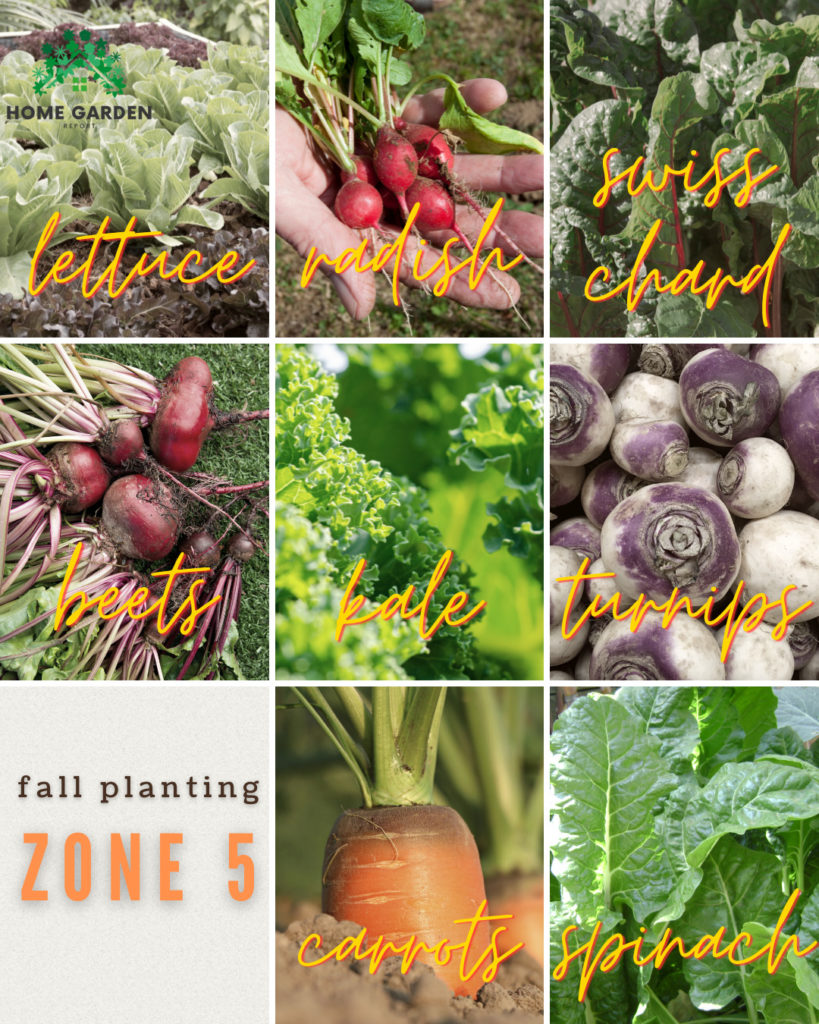
Don’t forget, the essence of fruitful autumn gardening in Zone 5 is to initiate planting early enough so your crops can reach maturity before the first heavy frost sets in. So, equip yourself with your gardening gloves and let’s take full advantage of the fall planting season!
Zone 6
Moving on to Zone 6, where the first frost typically arrives in October. This gives you a bit more time to plant and harvest your fall crops.
In Zone 6, some of the best vegetables to plant in the fall include:
- Beets: Like in Zone 5, beets are a great choice for a fall garden in Zone 6. They can be harvested when small for a sweet flavor or left in the ground to grow larger.
- Lettuce: Lettuce is a cool-weather crop that can be planted in late summer for a fall harvest. Choose a variety that is frost-tolerant for the best results.
- Carrots: Carrots planted in late summer can yield a sweet, crisp fall harvest. The cool weather can actually enhance their flavor.
- Swiss Chard: This leafy green is not only colorful but also frost-tolerant. It can continue to produce leaves well into the fall season.
- Chinese Cabbage: Also known as bok choy, this vegetable is perfect for stir-fries and soups. It prefers cooler weather and can be harvested in late fall.
- Endive: This leafy green is a great addition to any fall garden. It’s frost-tolerant and can be harvested well into the fall season.
- Rutabaga: This root vegetable is a great choice for a fall garden. It’s frost-tolerant and can be harvested in late fall or early winter.
- Irish Potatoes: While most people associate potatoes with spring planting, they can also be planted in late summer for a fall harvest in Zone 6.
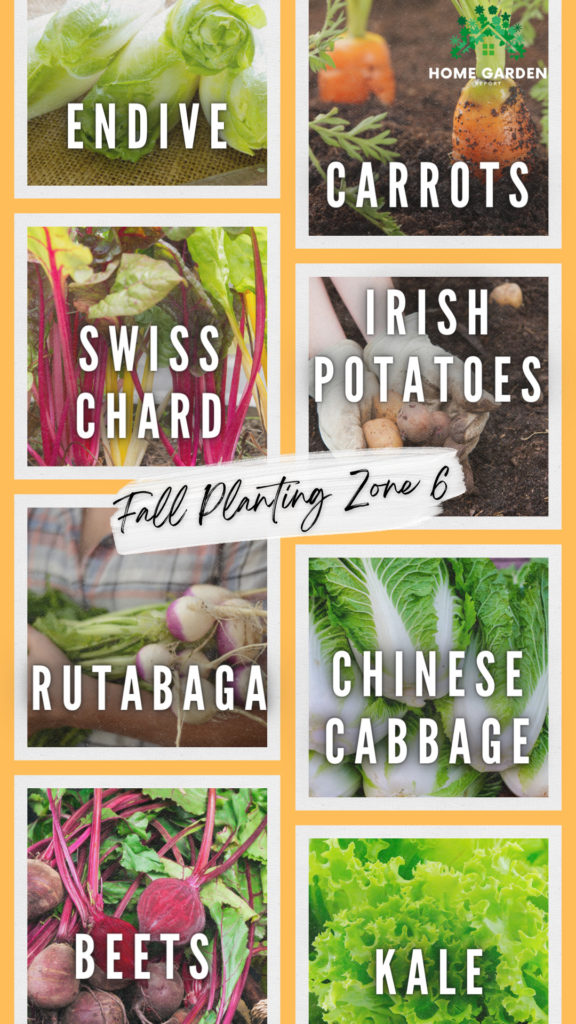
Remember, the key to successful fall gardening in Zone 6 is to plant early enough that your crops have time to mature before the first hard freeze. So, get your gardening shovels ready and let’s make the most of the fall planting season!
Zone 7
Welcome to Zone 7, where the first frost typically arrives in November. This gives you plenty of time to plant a variety of fall crops.
In Zone 7, some of the best vegetables to plant in the fall include:
- Broccoli: This cool-weather crop can be planted in late summer for a fall harvest. It’s frost-tolerant and can continue to produce heads well into the fall season.
- Brussels Sprouts: These mini cabbages are a great addition to any fall garden. They’re frost-tolerant and can be harvested in late fall or early winter.
- Cauliflower: Like broccoli, cauliflower is a cool-weather crop that can be planted in late summer for a fall harvest. It’s frost-tolerant and can continue to produce heads well into the fall season.
- Beets: Beets are a great choice for a fall garden in Zone 7. They can be harvested when small for a sweet flavor or left in the ground to grow larger.
- Carrots: Carrots planted in late summer can yield a sweet, crisp fall harvest. The cool weather can actually enhance their flavor.
- Lettuce: Lettuce is a cool-weather crop that can be planted in late summer for a fall harvest. Choose a variety that is frost-tolerant for the best results.
- Spinach: This leafy green prefers cooler weather and can continue to produce leaves until the first hard freeze.
- Arugula: This peppery green is a great addition to any fall garden. It’s frost-tolerant and can be harvested well into the fall season.
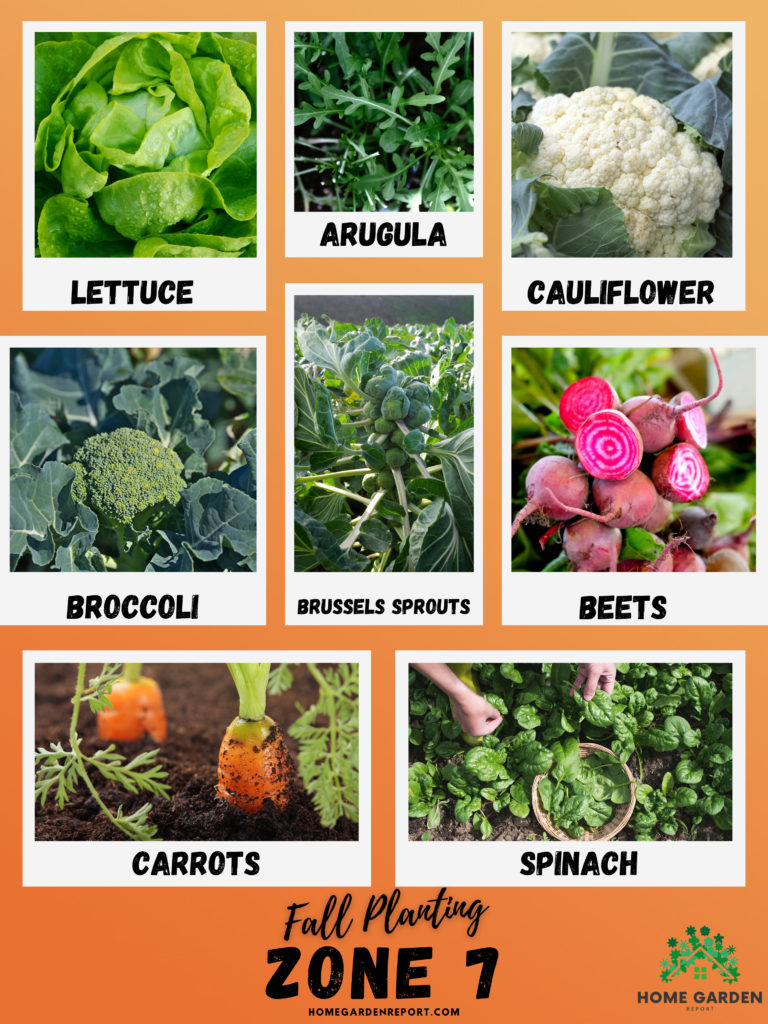
Keep in mind, the secret to a prosperous autumn garden in Zone 7 is to sow your seeds early enough to allow your crops to fully develop before the first intense frost hits. So, gear up Zone 7 and let’s fully utilize this fall planting season!
Zone 8
Welcome to Zone 8, where the first frost typically arrives in December. This gives you plenty of time to plant a variety of fall crops.
In Zone 8, some of the best vegetables to plant in the fall include:
- Beets: Beets are a great choice for a fall garden in Zone 8. They can be harvested when small for a sweet flavor or left in the ground to grow larger.
- Cauliflower: Like broccoli, cauliflower is a cool-weather crop that can be planted in late summer for a fall harvest. It’s frost-tolerant and can continue to produce heads well into the fall season.
- Carrots: Carrots planted in late summer can yield a sweet, crisp fall harvest. The cool weather can actually enhance their flavor.
- Kale: This superfood is not only nutritious but also incredibly frost-tolerant. It can continue growing well into the winter months, providing you with a fresh supply of greens when most other plants have called it quits.
- Lettuce: Lettuce is a cool-weather crop that can be planted in late summer for a fall harvest. Choose a variety that is frost-tolerant for the best results.
- Peas: Peas are a great addition to any fall garden. They’re frost-tolerant and can be harvested well into the fall season.
- Spinach: This leafy green prefers cooler weather and can continue to produce leaves until the first hard freeze.
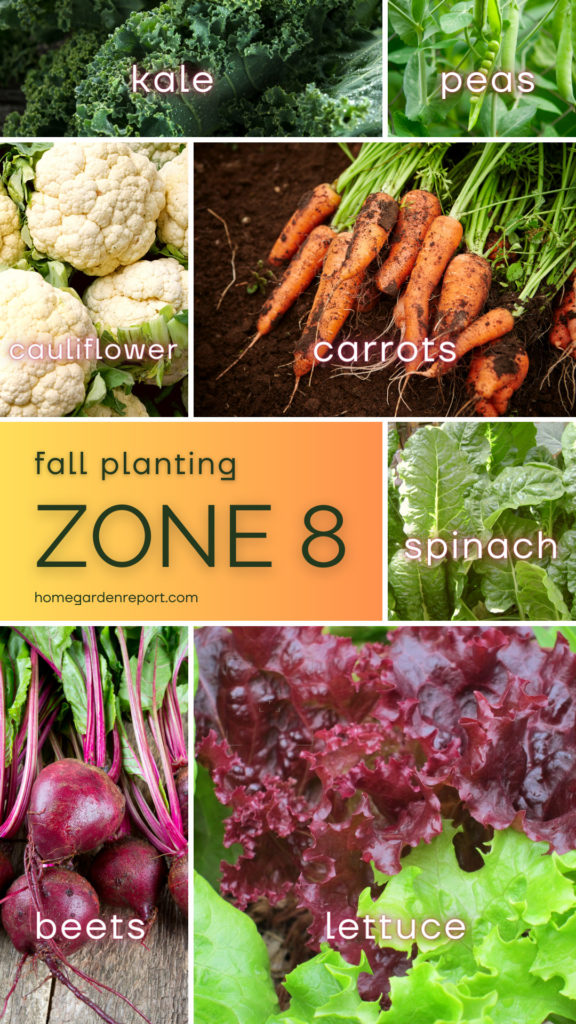
Don’t forget, the secret to thriving autumn gardening in Zone 8 lies in planting early enough so your crops can fully grow before the initial severe frost. So, prepare your garden and let’s seize the day to maximize the autumn planting season!
Zone 9
Finally, we arrive at Zone 9, where the first frost typically doesn’t arrive until December or January. This gives you plenty of time to plant a variety of fall crops.
In Zone 9, some of the best vegetables to plant in the fall include:
- Beets: Beets are a great choice for a fall garden in Zone 9. They can be harvested when small for a sweet flavor or left in the ground to grow larger.
- Broccoli: This cool-weather crop can be planted in late summer for a fall harvest. It’s frost-tolerant and can continue to produce heads well into the fall season.
- Brussels Sprouts: These mini cabbages are a great addition to any fall garden. They’re frost-tolerant and can be harvested in late fall or early winter.
- Cabbage: Cabbage is a cool-weather crop that can be planted in late summer for a fall harvest. It’s frost-tolerant and can continue to produce heads well into the fall season.
- Carrots: Carrots planted in late summer can yield a sweet, crisp fall harvest. The cool weather can actually enhance their flavor.
- Cauliflower: Like broccoli, cauliflower is a cool-weather crop that can be planted in late summer for a fall harvest. It’s frost-tolerant and can continue to produce heads well into the fall season.
- Kale: This superfood is not only nutritious but also incredibly frost-tolerant. It can continue growing well into the winter months, providing you with a fresh supply of greens when most other plants have called it quits.
- Lettuce: Lettuce is a cool-weather crop that can be planted in late summer for a fall harvest. Choose a variety that is frost-tolerant for the best results.
- Peas: Peas are a great addition to any fall garden. They’re frost-tolerant and can be harvested well into the fall season.
- Radishes: Radishes are a quick-growing crop that can be planted multiple times in the fall.
- Spinach: This leafy green prefers cooler weather and can continue to produce leaves until the first hard freeze.
- Swiss Chard: This leafy green is not only colorful but also frost-tolerant. It can continue to produce leaves well into the fall season.
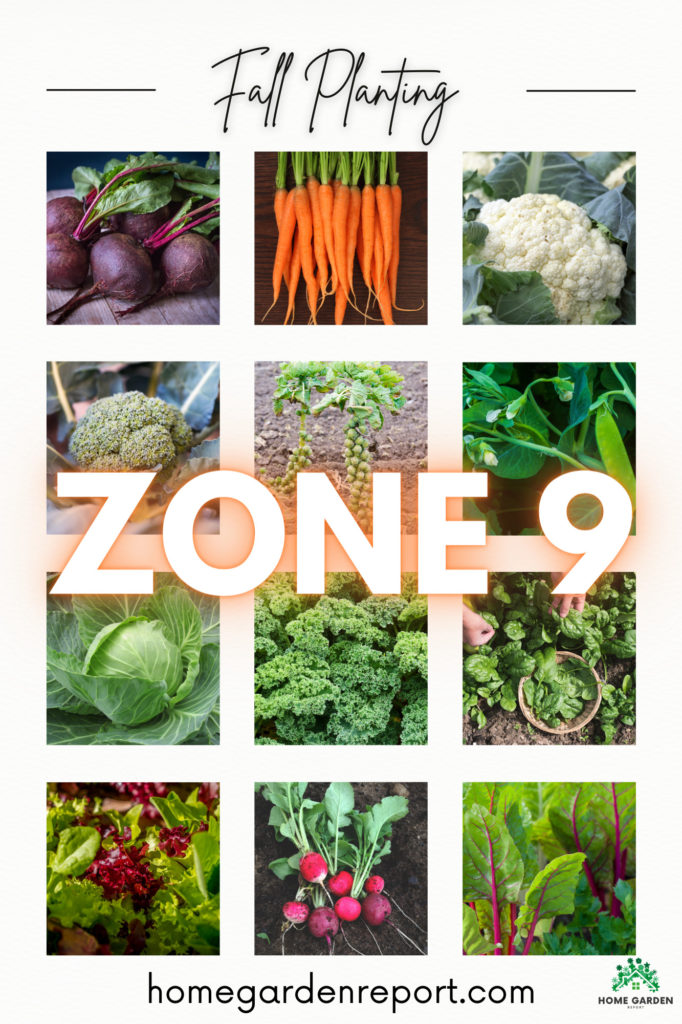
Remember, the key to successful fall gardening in Zone 9 is to plant early enough that your crops have time to mature before the first hard freeze. So, get your gardening gloves ready and let’s make the most of the fall planting season!
Fall Crops Reference Table
This table provides a quick reference for which crops can be grown in each zone. The check marks (✓) indicate that a crop can be grown in that zone.
| Fall Crops | Zone 5 | Zone 6 | Zone 7 | Zone 8 | Zone 9 |
|---|---|---|---|---|---|
| Kale | ✓ | ✓ | ✓ | ✓ | ✓ |
| Lettuce | ✓ | ✓ | ✓ | ✓ | ✓ |
| Carrots | ✓ | ✓ | ✓ | ✓ | ✓ |
| Beets | ✓ | ✓ | ✓ | ✓ | ✓ |
| Swiss Chard | ✓ | ✓ | |||
| Turnips | ✓ | ||||
| Radish | ✓ | ✓ | |||
| Chinese Cabbage | ✓ | ✓ | ✓ | ✓ | |
| Endive | ✓ | ✓ | ✓ | ✓ | |
| Rutabaga | ✓ | ✓ | ✓ | ✓ | |
| Irish Potatoes | ✓ | ||||
| Broccoli | ✓ | ✓ | ✓ | ||
| Brussels Sprouts | ✓ | ✓ | ✓ | ||
| Cauliflower | ✓ | ✓ | ✓ | ||
| Arugula | ✓ | ✓ | ✓ | ||
| Peas | ✓ | ✓ |
Month-by-Month Guide for Fall Gardening
Gardening is a year-round activity, and each month brings its own set of tasks and possibilities. Here’s a general guide to help you plan your fall garden:
September
- Begin by harvesting any remaining summer crops.
- Start planting your fall crops. In cooler zones (5-6), focus on fast-growing, frost-tolerant crops like lettuce, radishes, and spinach. In warmer zones (7-9), you can start planting crops like beets, carrots, and broccoli.
- Start preparing your garden for the cooler months. Remove any spent plants and add compost or organic matter to enrich the soil.
October
- Continue planting fall crops in warmer zones (7-9). Consider crops like cabbage, cauliflower, and peas.
- Harvest mature crops in cooler zones (5-6) before the first hard freeze.
- Mulch around your plants to protect them from cooler temperatures and to keep the soil moist.
- Start planning for your spring garden. Some crops, like garlic and shallots, are planted in the fall for a spring harvest.
November
- In warmer zones (7-9), continue to care for and harvest your fall crops.
- Plant cover crops like clover or rye to enrich the soil over the winter.
- In all zones, clean and store your gardening tools. It’s also a good time to take stock of your garden and make notes for next year.
Remember, these are general guidelines and actual planting times can vary based on local weather conditions and the specific needs of different crops. Always check the seed packet for the best planting times for each crop.
Preparing Your Garden for Fall
As the summer season winds down, it’s time to start preparing your garden for the fall. Here are some tips to help you get your garden ready:
- Examine the Garden: Start by taking a good look at your garden. Identify any plants that are diseased or infested with pests and remove them to prevent the problem from spreading.
- Clear out the Garden: Remove any spent summer crops to make room for your fall plants. This is also a good time to weed your garden.
- Add Soil Amendments: Fall is a great time to add compost or other organic matter to your garden. This will enrich the soil and provide nutrients for your fall crops.
- Plant Cold-Loving and Heat-Loving Vegetables Separately: Different crops have different temperature preferences. Plant your fall crops in a way that takes advantage of these preferences.
- Collect Seeds: If you have any plants that you’d like to grow again next year, consider collecting their seeds. Store them in a cool, dry place until you’re ready to plant them.
- Prepare for Frost: If you live in a cooler zone, consider setting up row covers or cold frames to protect your crops from early frosts.
- Plan for Next Year: Fall is a great time to start planning for your spring garden. Some crops, like garlic and shallots, are planted in the fall for a spring harvest.
Remember, every garden is unique, and the best practices for preparing your garden for fall may vary based on local conditions and the specific needs of your plants. Happy gardening!
Conclusion
And there you have it, folks! A comprehensive guide to fall crops for every climate, from Zone 5 to Zone 9. We’ve explored the best vegetables and herbs to plant in the fall, provided a month-by-month guide for fall gardening, and shared some tips for preparing your garden for the fall season.
Whether you’re a seasoned gardener looking to diversify your autumn harvest or a beginner trying to figure out what to plant in the fall, we hope this guide has been helpful. Remember, gardening is a journey, not a destination. So, don’t be afraid to experiment, learn from your mistakes, and most importantly, have fun!
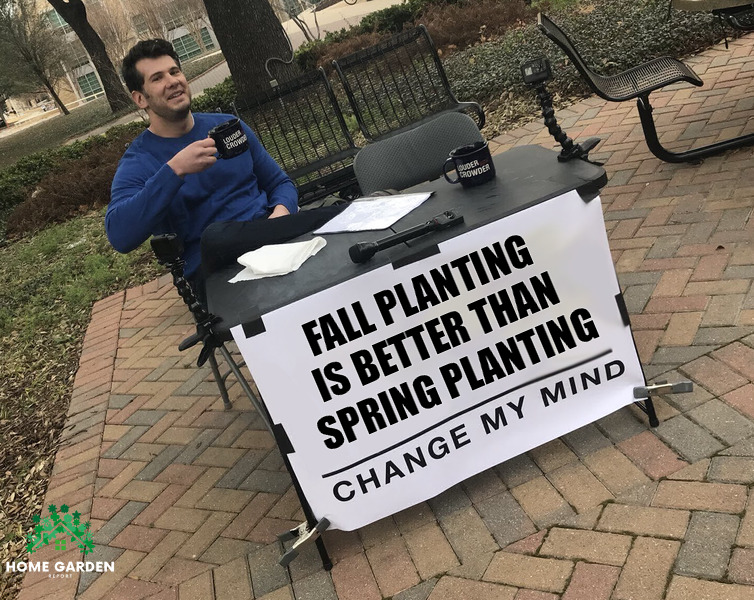
So, what are you waiting for? Grab your gardening gloves, get out there, and start planting your fall garden. And don’t forget to share your fall gardening adventures with us. We’d love to hear about your successes, challenges, and everything in between. Happy gardening!


